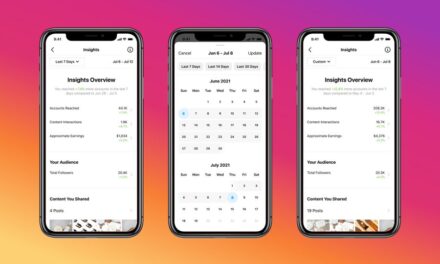A new year brings with it a new set of challenges, opportunities for growth, and a whole new set of digital marketing trends.
While some of us have already bailed on our personal New Year’s resolutions, businesses have a completely different list on their minds – what they need to look out for in 2019. With so many new businesses making their presence felt, what is it that you can do to make sure your business stands out from amongst the noise?
Recode wrote about a Zenith study that predicts people will spend more time online than they will spend watching TV this year.
There are many new digital marketing trends and strategies that are evolving in the current high-tech, Internet-connected era, and businesses now need to use them to succeed in their efforts, because what worked for you last year may not work this year.
Take on this year like a champ with these digital marketing trends
1. Content marketing
Content is what people consume, share, and what gets your small business found on the internet.
Whether it’s coming up with content ideas, writing newsletter articles, creating and maintaining a blog, or just thinking of stuff to share on Facebook or Twitter – content marketing comes with certain challenges. Great content is all about catering to what your audience needs. It’s the reason someone visits your website from a search engine or checks out your content in the first place: to learn more about your business and see what you can do to help them.
So, whether you’re writing about products, services, events, and promotions, or just sharing your expertise about your industry — you already have those answers. Now all you need is a strategy for turning those answers into great content for your readers.
2. Email marketing
While every business has their preferred way of communicating, email marketing has always been the most effective way to reach out and engage with customers.
A big part of the growth of email marketing in the coming year is the use of marketing automation to send targeted, customized messages to consumers at the right time. Email automation also helps you target the users who are interested in hearing from you, cutting down on the unnecessary messages, and focusing in on quality leads. It also works as a successful tool for retargeting.
In a competitive market, first impressions are everything. If someone signs up for your email list, it’s up to you to delight them right away, with interesting, helpful content, and enticing offers.
3. AI and machine learning
Artificial intelligence, or AI, is empowering marketing teams to process and act on customer data more effectively.
A survey by Salesforce indicated that 51% of businesses already use AI, and this number is due to increase by 27%, in 2019.
AI can analyze consumer behavior and search patterns using data from social media platforms or blog posts to help businesses understand how the audience finds products and services. For example, Facebook messenger bots (which we’ll talk more about later) can help you automate and optimize your customer service.
4. Chatbots
Chatbots are an AI-based technology that use instant messaging to chat in real-time with your customers or site visitors.
Many brands have started to communicate with their prospects through messenger applications like WhatsApp, Facebook Messenger, and Slack. Chatbots are making the process of automating responses to potential buyers’ frequently asked questions even easier by providing them with a better way to search for the product or service they want.
Chatbots also have many other advantages. They can serve clients 24/7, and retain their data. Chatbots can respond to several requests from different customers at the same time, so waiting times are no longer a problem.
Sephora, for example, uses a chatbot to give beauty advice to its users, and offer them the best cosmetic products according to their needs. Through its application or website, Sephora Visual Artist lets its potential clients “test” cosmetic products like lipsticks, eyeshadows, and highlighting pallets. Visual Artist can identify facial features and then use augmented reality (AR) to apply the selected product to the user’s photograph. It can even automatically apply an eyeshadow suggestion based on the skin tone of the consumer!
5. Video marketing
Over the last couple of years, the scope of video has grown exponentially. As new capabilities like AR, 360-degree video, and vertical content continue to gain importance, video isn’t going anywhere anytime soon.
But in an effort to keep from spreading yourself too thin, in 2019, focus on live video.
This Livestream study found that 80% of respondents would rather watch a live video from a brand than read a blog, and Cisco estimates video will make up 80% of all internet traffic by 2019. Those two stats paired together form a compelling case for your business to prioritize live video.
More than 2 billion people have watched a Facebook Live, and Instagram’s more than 1 million users also favor video as their most-watched medium. Viewers love behind-the-scenes looks they might not otherwise get. That could include:
- Product demos
- Interviews with partner experts or staff
- A peek at a day at the office (great recruiting tool!)
- Fireside chat with customers
Whatever it is, be sure it’s authentic and not too scripted. Over-planning a live video is a guaranteed way to get some eye rolls, and a quick click of the “stop” button.
6. Voice search
Voice search allows users to perform a search by verbally asking a question to a smartphone, smart device or a computer rather than using traditional search methods.
Voice search is growing exponentially, year-on-year, and is becoming popular with all age groups, especially the younger generation. A study by BrightLocal reported that 58% of consumers have used voice search to find local business information within the last year, and 27% visit the website of a local business after conducting a voice search.
Further feeding the beast is a statistical search analysis by ComScore which predicts that 50% of all searches will be accomplished by voice search in 2020.
Not only are more companies opting to produce voice content, but ad space is likely to open up soon. Alexa will soon tell you the answer to your question, along with a “word from her sponsor.” Which means you’ll be able to purchase voice ad space – like Google AdWords for home speakers.
7. Visual search
Along with video search, visual search is aiming to take the user experience to a whole new level. With visual search, users can upload and search with an image for specific results.
Pinterest too has jumped on the visual search bandwagon. They launched Lens, a new visual search tool that allows users to take a photo of an item to find out where to buy it online, search for similar products, or view pinboards of related items.
And they’re not the only ones.
Google Lens is a visual search engine by Google, which recognizes objects, landmarks, and other things visually through a camera app (currently only available on Pixel phones).
Take a photo of a:
- Business card: To save the phone number or address to a contact.
- Book: To get reviews and purchasing details.
- Landmark or building: To see a history, or other details.
- Painting in a museum: To get details on the artist, or articles of its significance.
Pro tip: In 2019, consider incorporating new visual search tools in your brand’s app, and make sure to stay active on Pinterest.
8. Influencer marketing
Influencer marketing is a hybrid of old and new marketing tools. It takes the idea of the celebrity endorsement, and configures it with today’s social media-driven world.
Influencer marketing has proven to be one of the most effective ways of connecting with a community. Building a relationship with an influencer builds credibility with their audiences, and as their audiences grow and mature, you can rely on these influencers for strategic insights into maintaining a community of loyal fans.
Influencer marketing is poised to reach between $5 billion, and $10 billion by 2022.
Influencers, or “micro-influencers,” are people who engage and interact with their followers, who are viewed as relatable and authentic. Micro-influencers tend to be knowledgeable and unbiased, and consumers are likely to trust their recommendations. They’re also are more affordable than enlisting a celebrity as an influencer, or brand ambassador.
9. Social networks
Every day, millions of users login to social media sites to connect with family, friends, and businesses they care about. The posts that your small business or nonprofit share on social media are going head-to-head with everyone else’s, competing for the attention of users every single day.
Social media stories have gained immense popularity in the last couple of years. First Snapchat came out with the concept of “My Story,” then Instagram and Facebook stories were introduced, and now YouTube has unveiled their own story format, “Reels.”
The rise of the stories format is highly important to marketers, but another shift in social media behavior may be even more impactful: the rapid adoption of messaging apps. Three prominent messaging platforms (WeChat, WhatsApp, and Facebook Messenger) now have more than one billion monthly active users, and the growth of these types of apps continues to be breathtaking.
10. Mobile marketing
If you’re already using social media to engage with your target audience, chances are you’re already involved in a conversation with the mobile majority.
Over 80% of smartphone users connect to sites like Facebook, Twitter, and Pinterest on their mobile devices. On Facebook, 600 million of its 1 billion users are logging onto the site via a mobile device, and 70% of those users return to the site on a daily basis (compared to 40% for desktops).
That means, whether it’s at home, work, or at your place of business, mobile users are among the most engaged members of your social communities.
40% of all mobile web searches have local intent. These are people that are currently living or visiting your area, searching for a specific product or service, and who are hoping to discover a local answer to their mobile questions.
Mobile web searches can either be a small business’ dream, or its worst nightmare. Take the time to search your place of business for keywords related to the work you do. Make sure that what customers are finding is something that accurately represents your brand. And most importantly, make sure you have a presence on mobile maps!
Is your marketing plan set up for success this year?
As you consider how to incorporate these digital marketing trends into this year’s marketing strategy, we’d like to offer one more suggestion: don’t forget to add a personal touch wherever you can to create a true one-to-one marketing experience with your target audience.
With the proliferation of AI, the temptation to use it often is strong. But remember, automated bots can’t provide the same level of human interaction as a real person. It’s time to start treating your customers like close confidants and friends.
Read more at https://www.business2community.com/digital-marketing/2019-digital-marketing-trends-that-should-be-on-your-radar-02170257














